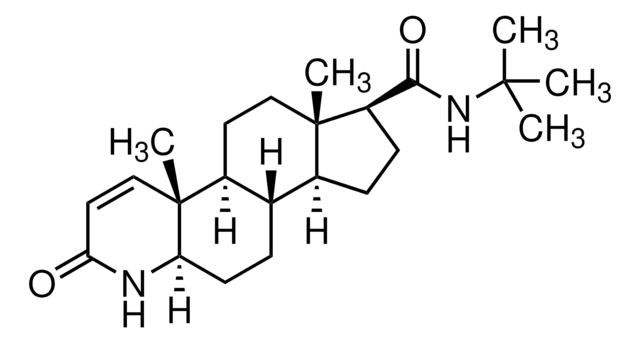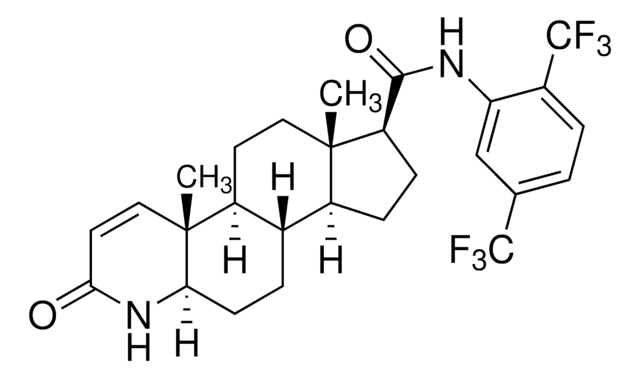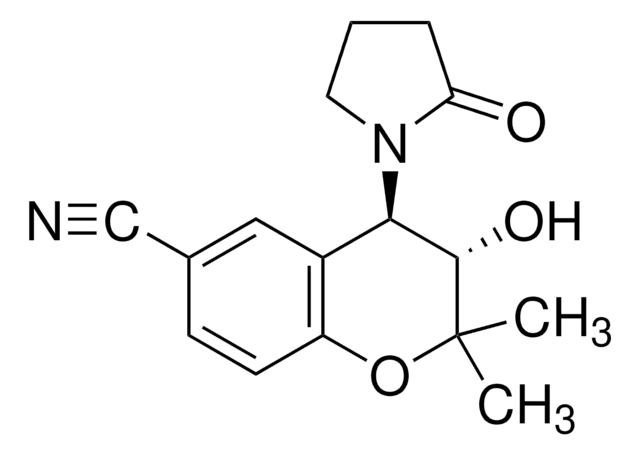M4145
Minoxidil
≥99% (TLC), powder, androgenetic alopecia drug
Sinónimos:
6-(1-Piperidinyl)-2,4-pyrimidinediamine 3-oxide, 6-(1-Piperidinyl)pyrimidine-2,4-diamine 3-oxide
About This Item
Productos recomendados
product name
Minoxidil, ≥99% (TLC)
assay
≥99% (TLC)
mp
272-274 °C (dec.) (lit.)
originator
Johnson & Johnson
SMILES string
NC1=CC(=NC(=N)N1O)N2CCCCC2
InChI
1S/C9H15N5O/c10-7-6-8(12-9(11)14(7)15)13-4-2-1-3-5-13/h6,11,15H,1-5,10H2
InChI key
ZIMGGGWCDYVHOY-UHFFFAOYSA-N
Gene Information
human ... KCNJ1(3758)
¿Está buscando productos similares? Visita Guía de comparación de productos
Application
- in dermal papilla spheroid model, to study the effect of hair regeneration
- administered orally to experimental rats, in the approach to identify biomarkers of drug induced vascular injury
- administered via oral gavage to nonhuman primate model in order to study its effect on tilt responses
Biochem/physiol Actions
Features and Benefits
signalword
Warning
hcodes
Hazard Classifications
Acute Tox. 4 Oral - Eye Irrit. 2 - Skin Irrit. 2 - STOT SE 3
target_organs
Respiratory system
Storage Class
11 - Combustible Solids
wgk_germany
WGK 3
ppe
dust mask type N95 (US), Eyeshields, Gloves
Certificados de análisis (COA)
Busque Certificados de análisis (COA) introduciendo el número de lote del producto. Los números de lote se encuentran en la etiqueta del producto después de las palabras «Lot» o «Batch»
¿Ya tiene este producto?
Encuentre la documentación para los productos que ha comprado recientemente en la Biblioteca de documentos.
Los clientes también vieron
Nuestro equipo de científicos tiene experiencia en todas las áreas de investigación: Ciencias de la vida, Ciencia de los materiales, Síntesis química, Cromatografía, Analítica y muchas otras.
Póngase en contacto con el Servicio técnico








